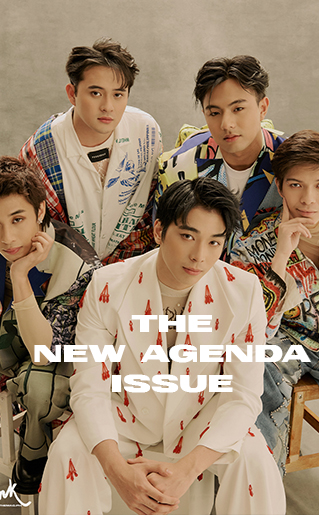Life is indeed fantastic now that the highly-anticipated film of the year by Greta Gerwig, the Barbie Movie, gracefully topped global box office records and caressed the emotions of multitudes of its moviegoers—from the young and the seasoned, the feminine and the masculine, and the extraordinary to the ordinary.
As it had, widely and in varying degrees of controversiality, opened up dialogues on gender politics, Barbie has stood as a true tour de force—leaving audiences entirely enthralled, bewitched, and mesmerized by its unrivaled cinematic brilliance. The film’s narrative has masterfully woven an enchanting tapestry of emotional, physical, and mental sensibilities, that resonated and lingered in our hearts and minds long after the credits roll.
Image courtesy of Jaap Buitendijk/ Warner Bros. Pictures.
Barbie, an enduring and iconic creation since its inception in 1959, has charmed generations of children and adults alike. Those who once embraced the whimsy of Barbie dolls during their formative years often harbor cherished memories of their childhood. When the Barbie movie graced the screen, it skillfully tapped into this wellspring of nostalgia, effortlessly summoning a kaleidoscope of emotions—rekindling innocence, effervescence, and a sense of carefree abandon that holds a profound power to heal and console the soul.
A trip down memory lane in Barbie Land
Image Courtesy of Warner Bros. Pictures
Within the enchanting realm of Barbie’s picturesque milieu—a charming Barbie land with three-story dream house adorned with an elevator, a kidney-shaped pool with a spiral slide, and a wardrobe with glass doors brimming with a bevy of attires—reminiscent of the toy houses of yesteryears, forays into a realm of familiar recollections, case in point, the 1985 Treehouse nestled within Barbie’s enchanting cul-de-sac, a flawless replica of Mattel’s beloved Chelsea Barbie Doll and Treehouse Playset.
The allure of pink transcends the realms of mere paint, clothing, and accessories in Barbie Land, it boldly extends to embrace the very essence of the “natural” environment, even on the serene beaches with its shimmering expanse of pink sand. A delightful déjà vu-like sensation envelops us throughout the film, akin to encountering a cherished dream house from our childhood, or at least an evocative semblance thereof, eliciting a rush of nostalgic emotions deeply embedded within our hearts.
Nostalgia is good for our inner child’s soul
Nostalgia serves as a sentimental bridge that enables us to forge a deep connection with our past selves, evoking cherished recollections of the transformative experiences that have shaped our very identities. The profound struggles of America Ferrera’s character, navigating the complexities of her relationship with her teenage daughter, while seeking solace in the nostalgic embrace of her old Barbie, served as a poignant revelation. It awakened our awareness of the transformative power of reconnecting with one’s inner child, even in the face of societal judgments that may label such endeavors as peculiar.
Witnessing her healing journey unfold onscreen, we came to appreciate the profound therapeutic nature of embracing our inner child, regardless of age or external perceptions. It illuminated the liberating truth that in honoring our past and nurturing our inner child, we can discover profound healing and a renewed sense of self that transcends the confines of societal norms.
Amplifying this notion powers the Barbie movie as a conduit for regulating our emotions and nurturing resilience. It deftly explored the significance of acknowledging and processing long-suppressed or overlooked emotions from our past. This was exemplified by the poignant portrayal of “Depression Barbie” in the film, along with other versions of the character facing genuine struggles born from the complexities of the real world.
As we already know it to be, Barbie, with her distinctive look and outfits, becomes more than just a toy; she becomes a symbol of innocence, happiness, and the simpler times we once had. Fast forward to us growing up and Barbie entering the ‘Real World’, we now witness the not-so-fantastic reality of the world—questioning what are we made for.
The world of Kens outside the feminist utopia
Image Courtesy of Warner Bros. Pictures.
In the film, everything is perfect for the stereotypical Barbie played by Margot Robbie. Each morning dawns with a radiant smile, followed by the meticulous selection of the perfect outfit, and a delightful breakfast to match. Basking in the sun-kissed beaches alongside her fellow Barbies and Kens, the day unfurls in the euphoria of camaraderie. Long story short, the unapologetic feminist utopia of Gerwig’s interpretation of Barbie Land is what we, women, always hoped for. A world without stereotypes where womanhood is a source of power and respect that turns traditional gender-specificity into a celebration of women’s power.
Barbie’s blissful naïvete was soon then disrupted after venturing outside her dream-like world. From that point forward, Barbie’s once flawless days cease to be so idyllic, developing self-awareness and anxiety about the truth of the world we have now, instantaneously subjected to the unsettling and disheartening experience of being sexualized, objectified, and othered.
Not long after, the cruel accusations of her being a fascist, hurled by teenagers, further compounded her distressing awakening. Matters took an even darker turn when she found herself incarcerated for retaliating against a man who subjected her to unwarranted and offensive catcalling, resulting in a regrettable assault. A little too familiar, right?
The portrayal of these troubling events within the narrative sheds light on the pervasive issues of sexism, harassment, and the complexities surrounding the concept of justice for women. The human characters, portrayed by Ferrera and Ariana Greenbelt, shift the focus from dollhood to a captivating exploration of womanhood in the real world. Amid Barbie’s self-pity and existential contemplation, the film delves into the complexities of growing up as a woman, revealing both the beauty and the ugly.
As Ferrera’s character said during her iconic impassioned monologue, “It is impossible to be a woman,” especially living in a Kendom-like society. Women are presented with unrealistic shoes that they have to fit into, whether they like them or not. Women have to assume different roles and understand the contradictions of society’s expectations such as “being beautiful but not too much to tempt men and threaten other women, but not too ugly to the point that you cannot attract the opposite sex.”
The movie fearlessly confronts the struggles women endure, unapologetically expressing an exasperated frustration that some might find uncomfortably explicit. But truth be told, this unfiltered portrayal resonates as an authentic reflection of their own experiences.
You are and will always be Ken-ough!

Image Courtesy of Warner Bros. Pictures.
Within the film’s narrative, the resounding anthem of Barbie’s mantra, “Because Barbie can be anything, women can be anything,” echoes like a clarion call, inviting the audience to confront societal conventions with boldness and bask in the luminance of their uniqueness. An empowering decree that transcends the screen, it propels viewers to embrace their distinctiveness, fostering a culture of self-celebration and unleashing the boundless potential that resides within every individual.
The movie fervently implored its viewers to resist the pressure of conforming to rigid roles, particularly the deceptive allure of the so-called ‘girl boss’ archetype, propagated by capitalism. In today’s world, we often define ourselves through a plethora of labels— from our professions and appearances to our hobbies, talents, and relationships.
However, this film beautifully illustrates that it’s perfectly acceptable not to be extraordinary and haven’t got anything figured out. After all, feminism, in its essence, defies the confines of a singular trajectory. True empowerment lies in the freedom to forge one’s path, embracing the liberty to pursue any aspiration, even if it means just being ordinary.
Embracing the extraordinariness of womanhood doesn’t mean shying away from personal growth or aspiration. Instead, it calls for acknowledging that the very act of being a woman is an awe-inspiring and remarkable adventure. It’s a reminder that living authentically as a woman, with all the diverse roles and experiences it entails, is a source of strength, resilience, and inspiration. So, while pursuing personal aspirations is valuable, it’s equally important to appreciate that being a woman is already a magnificent and extraordinary journey in itself.
The Barbie movie, indeed, serves as a powerful catalyst, seamlessly bridging the realms of inner child healing and the intricate journey of womanhood. This cinematic journey not only unearths the nostalgia of our past but also ignites a contemporary discourse on the challenges women face today.
Through the characters’ evolution and the exploration of multifaceted identities, the film reflects our quests for authenticity and empowerment. Whenever doubt creeps in and you question your purpose, remember the empowering declaration that Barbie whispers to us all: You can be anything.


